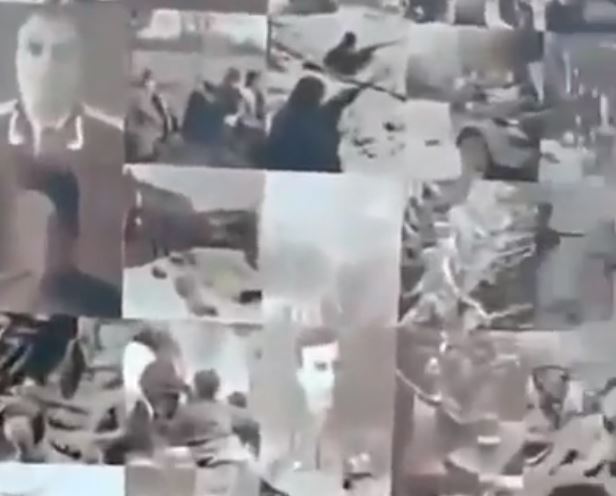Installation: Originally mounted on an automobile owned by Mr Stoody of Whittier California in 1933, and sold to Griffith Observatory in 1954.
Objective Diameter = 9½-inches (242 mm)
Objective Focal Length = 141 inches (3.58 m)
Objective Focal Ratio = F/14.8
https://www.cloudynights.com/topic/441872-what-is-the-holy-grail-of-telescope-collecting/page-12
https://griffithobservatory.org/exhibits/telescopes/zeiss-telescopes
the founding of Western Hills Country Club and the story of its founder, Shelly Stoody, who made his money in manufacturing materials out of metal alloys, but was also a patent holder for items dealing with cattle and other animals.
McCombs related that Stoody created his "Double S" (Shelley Stoody, presumably) in the early 1950s to breed Hereford cattle and made it a success in short order. Stoody, it was noted, looked down upon his domain "from his house atop the summit," which might well mean the house which sits surrounded by a few dozen palm trees that is on the hill directly east of Western Hills.
The "Double S" had a show ring, but also an air strip for his private plane. Unfortunately for Stoody and his passengers, an attempt to land the plane on the ranch in late June 1961 was altered by a gust of wind and the Beechcraft plowed into the hillside a short distance from the strip, which was below his home. Stoody and two passengers died instantly and the third passenger died later in the hospital.
After Stoody's death, the ranch was sold to a syndicate of physicians from Orange County, who paid $600,000 for the property and, in 1966, opened Western Hills.
A little research about Stoody yielded some interesting information about him. He was born 20 March 1899 in Union, Ohio, just northwest of Dayton, and his father Charles was a carpenter and then a machinist and blacksmith who specialized in repair work. By the time young Shelley registered for the draft in 1918 during the First World War, the Stoodys had relocated to Huntington, West Virginia, near the borders with Ohio and Kentucky, and Shelley and his older brother Winston worked as machinists for their father.
In 1921, Shelley Stoody, recently relocated to Whittier, opened up a welding company called Stoody-Rice, but soon took in as partners his father and brother and renamed the firm the Stoody Welding Company. By 1926, the company was simply known as the Stoody Company, but Winston had become president, Charles served as vice-president and Shelley was the secretary and treasurer. The elder Stoody soon retired but his sons continued to run the business with Shelley assuming the role of vice-president when his father stepped down.
In 1948, Stoody achieved some notoriety for buying a $25,000 helicopter for his commute from the peninsula to Whittier (cutting his travel time down from 1 1/2 hours by car to only 20 minutes by copter.) He was, in fact, a longtime pilot, having been an early aviator in Whittier, where he began his flying career in 1926, and he had a private plane at the airport in Torrance when he moved to the PV Estates. A Los Angeles Times article reported that he planned to build a helipad and hangar at his residence as well as at his business.
The increased wealth that allowed Stoody to live in Palos Verdes came from a patented process for more durable drill bits called "hardfacing," essentially creating an overlay coating of abrasion-resistant alloys welded onto the bits. Two products, "Stoodite," which was the first cast hardfacing rods and "Borium" the first use of tungsten carbide (the Stoody Company had a tungsten mine in the Mojave Desert from the late 1920s) for hardfacing, were innovations by the firm, which also was a pioneer the "submerged arc welding" process, in which the molten weld and arc zone have a compound of manganese oxide, silica, lime, calcium fluoride and other materials to protect the product from contamination. The financial windfall from his business allowed the entrepreneur to buy the 426-acre spread in Carbon Canyon that he called the "Double S" and Stoody also owned a cattle ranch in Nevada.
But the Stoody brothers were not content to merely repair busted bits. They were convinced there could be a way to make the drill bits more durable, and to stay sharper longer. From their experiments begun in 1922, they developed a technique, called hardfacing, that would stay with the industry for many decades. Hardfacing is the overlaying of metal with a coating of abrasion-resistant alloys via a welding process. This overlay greatly extends the life of the equipment.
Winston and Shelley began applying hardfacing to drill bits, at first called the "Stoody Rod," then later the "Stoody Self-Hardening." They developed the first chromium-manganese alloy for this process. Two years later, they introduced the "Stoodite," a cast welding rod that would become the industry standard for the next 40 years. Their next breakthrough came in 1927, when they perfected the use of borium, a tungsten-carbide material that became one of the hardest commodities ever used.
In the 1930s and 40s a unique vehicle roamed the streets of Los Angeles. The car, owned by Shelly Stoody, was typical for the time except for a 9.5” diameter, 12’ long Zeiss telescope mounted to the roof. It is unknown today how Shelly procured the 1920s era telescope but regardless, he would drive his showpiece to various amateur astronomy events and presumably share views of the sky. In 1955 Stoody sold the telescope to Griffith Observatory


















































